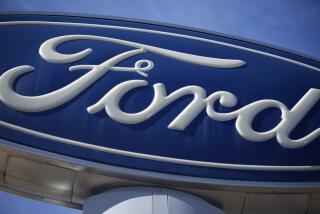What the Competition Is Doing
Although no other company has announced production plans for an electric car in the United States, the electric-vehicle team at General Motors in Warren, Mich., is constantly looking over its shoulder to see who is gaining on them. On the way to the bathrooms, engineers pass poster boards tacked up in a hallway that show electric-car prototypes built by other auto makers. They frequently stand there, mumbling to themselves about how Nissan got a battery to weigh less than GMâs.
Auto makers lagging behind face quite a challenge: California requires manufacturers to sell âclean carsâ in the state by 1998, and bringing a new car to market normally takes four to seven years.
âWe all suspect that everybodyâs working on something--itâs just that we donât know what,â says Bill Sessa of the California Air Resources Board, which set the standards that require pollution-free cars.
Just because other auto makers have been quiet doesnât mean they arenât working; most experts believe that Japanese manufacturers have secretly mounted production projects and might even beat GM to market.
So far, the electric test cars that have been unveiled by other companies are targeted for limited markets. Toyotaâs test van, supplied to Japanese municipal workers, is converted from a gasoline-powered Townace and travels at a snailâs pace, reaching 25 m.p.h. in 7.5 seconds with a 100-mile limit per charge and a top speed of 53 m.p.h. Honda has developed a test electric mini-car in Japan that travels just 80 miles at 25 m.p.h. on one charge. Nissanâs sporty coupe, the FEV, closely resembles General Motorsâ Impact, but its lightweight nickel-cadmium battery can recharge in 15 minutes (using 440 voltage instead of the standard 110) compared to the Impactâs six to eight hours. It travels 100 miles at 45 m.p.h. on a single charge compared with the Impactâs 120 miles. It accelerates from zero to 60 in 20 seconds, less than half as fast as the Impact. BMWâs E2, a boxy four-seater, has a sodium-sulfur battery with a 150-mile range. Chryslerâs TEVan, an electric-powered van based on its popular Plymouth Voyager, will cost an eye-opening $100,000; Chrysler plans to produce only about 50, mostly for a test fleet to be used by electric utilities. Fordâs Ecostar electric van will also be leased mostly to utility companies at first.
The first limited-edition electric cars to appear in Los Angeles are likely to be Swedish. The city has invested $4 million in CleanAir, a small Swedish company, for manufacture of electric cars for city and consumer use. Although CleanAir has financial problems, city utility officials say they are confident that the first 1,000 cars will start to arrive next year. Called LA301, the hybrid car also can run on gasoline and is not considered emissions-free. The LA301 is expected to cost $25,000 to $35,000 and travels only 60 miles on one charge. And its acceleration is only about half the Impactâs.






